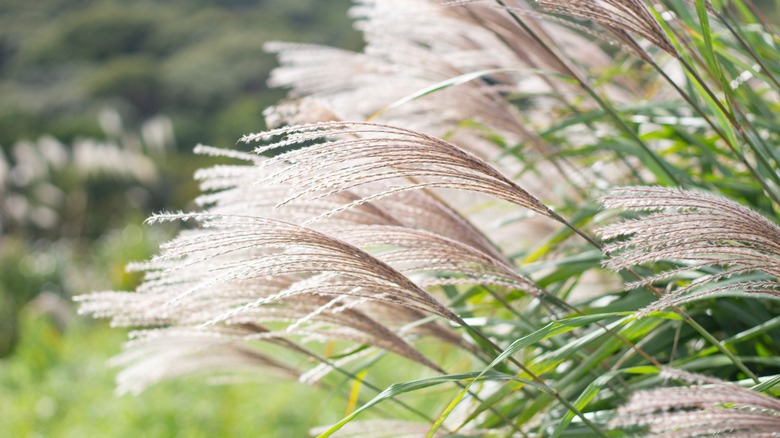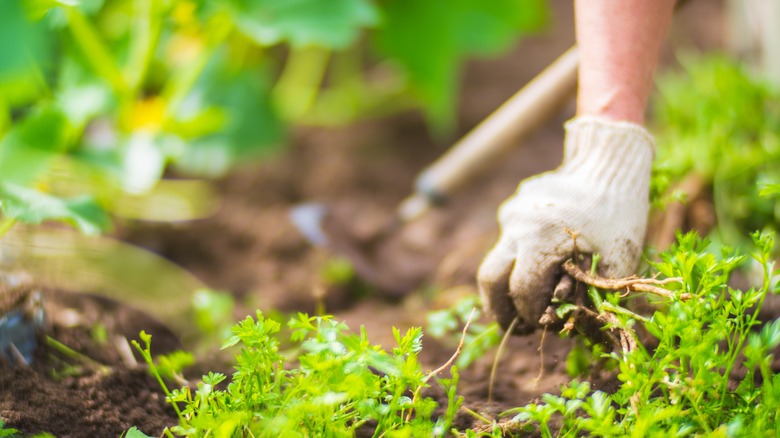How To Identify And Get Rid Of Maiden Grass In Your Yard
Ah, maiden grass, also known as Miscanthus sinensis. This tall, elegant grass may look fabulous at first glance, but trust us, spotting it on your lawn or beyond is not all it is cracked up to be. Originally introduced from Asia in the 1800s as a hardy and colorful ornamental grass, this plant has since decided that invading our landscapes is far more fun than staying where it was planted.
Why should we care? First, while we might admire this pretty plant, this grass harbors a dark secret: it's a fiercely competitive and invasive plant species, spreading through both rhizomes and wind-blown seeds where it will land and self-seed time and time again. It will encroach upon roadsides, forest edges, and disturbed areas, pushing out traditionally native plants — many of which provide essential sustenance for local wildlife. And it's not just a simple nuisance; it is also a highly flammable fire risk.
So, how do you know if you've found maiden grass? Well, this towering beauty can reach heights of 5 to 10 feet and is densely packed, with fountain-like arching leaves that stretch up to 18 inches long. Clusters of delicate plumes, ranging from 6 to 24 inches, flaunt a silvery or pale pink appearance — which makes it perfect for Instagram and easy enough to spot while out in the wild. So, while maiden grass might be pretty, remember that beauty can be deceptive! If you spot it, take action to protect your garden and the essential ecosystems it might be taking over.
How do you get rid of maiden grass?
When it comes to tackling the invasive menace known as maiden grass, arming yourself with a solid strategy makes all the difference. If you spot a few rogue plants in your yard or just around it, hand-weeding or using a wire weeder tool is your best first response. Grab your gardening gloves and dig out those pesky invaders, making sure to uproot the entire root system. If you're in a hurry, simply snipping off the flowers can prevent further self-seeding and give your garden a little bit of relief, but it might not prove to be a long-term solution.
For larger areas, you might have to go bigger using a combination of chemical and mechanical control. Start in late winter or early spring by chopping back last year's growth to the ground. When new shoots hit around 12 inches, use an herbicide, which will help kill off the plant to the root. While glyphosate is generally called for at this stage, keep in mind that the herbicide is considered carcinogenic and, as such, not recommended.
As for mechanical control, don't forget to mow strategically throughout the growing season; repeated cuts can put maiden grass on a fast track to its demise, usually within two seasons. For those with livestock, consider letting them nibble on maiden grass — they'll do the heavy lifting for you, at least in controlling general growth. Just make sure you don't try and kill it with fire –- burning this grass doesn't help and, in fact, often boosts its growth!

